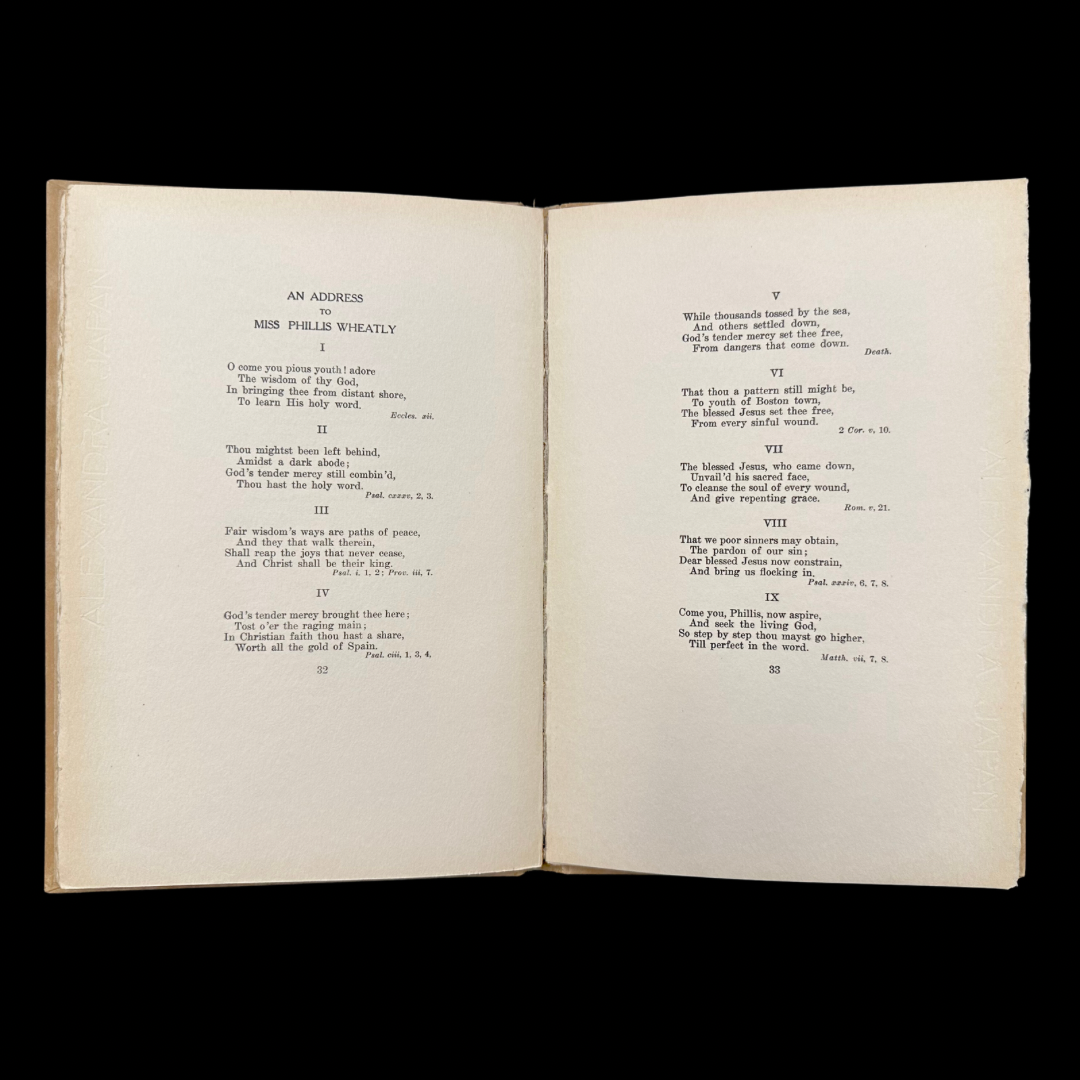
by Princess McCann
Jupiter Hammon, born October 17, 1711, was the first African American published poet in America. He was born enslaved by Henry Lloyd at the Henry Lloyd Manor House. Hammon’s first poem, “An Evening Thought. Salvation by Christ, with Penitential Cries: Composed by Jupiter Hammon, a Negro Belonging to Mr. Lloyd, of Queen’s Village, on Long Island, the 25th of December 1760” was published in Hartford, Connecticut as a broadside in 1761.
His second published work was an address to another poet born enslaved, Phillis Wheatley, eighteen years after his first publication. Wheatley and Hammon shared an interest in writing poems about God and biblical themes including salvation. For instance, Wheatley’s most famous poem, “On Being Brought from Africa to America” incorporates themes of slavery, God, and a Saviour. Hammon’s own poem repeats the notion of salvation through Christ. The only mention of slavery comes at the end of stanza eight when he writes “he being thy captive slave.”
Hammon uses his poem “An Address to Miss Phillis Wheatley” to respond to Wheatley’s “On Being Brought from Africa to America.” While Wheatley’s poem consists of eight lines with heroic couplets, Hammon’s poem to Wheatley consists of twenty-one quatrains and focuses on Christian faith and the mercy of God. In the poem, Hammon describes Wheatley as a “pious youth” and a “youth of Boston town,” but he calls her by name in the ninth stanza. The address can be viewed on the website of the Connecticut Historical Society Museum and Library.

Hammon is also known for his 1787 speech, “An Address to the Negroes in the State of New York,” believed to be one of the first published by an African American. His speech came soon after the Revolutionary War ended which saw America freed from the British, but people still enslaved in America. He addressed the speech to the African Society of New York which was one of the first Black societies in New York City. Like Phillis Wheatley, criticism of Hammon stems from his unwillingness to denounce slavery and enslavers in his published work, though there are instances in his speech, and in the work of Wheatley, where he challenges the notion of slavery as God’s will as opposed to the result of laws created by man. Henry Lloyd died in 1763, though Hammon remained enslaved through Lloyd’s son, Joseph.
The Lloyd family left Long Island for Hartford, Connecticut during the Revolutionary War. While living in Connecticut, Hammon became active in the African American community and joined abolitionist and Revolutionary War groups. Hammon is believed to have died in 1806 at age 95, still enslaved, and buried in an unmarked grave on the Lloyd property. He lived longer than most enslaved people at the time who rarely made it to their fifties.
Recent developments on the life of Hammon include unpublished poems found in recent years and a project from Preservation Long Island. The organization started the Jupiter Hammon Project in March 2019. The project began as a way to explore the history of enslavement at the Joseph Lloyd Manor which the organization acquired through a donation in 1968. The project includes background on Jupiter Hammon in a series of blog posts and numerous resources documenting Hammon’s life, work, and enslavement on Long Island. “Jupiter Hammon was one of only two authors to publish in North America while enslaved during the 18th century,” said Lauren Brincat, curator at Preservation Long Island. “His poetry and prose provide a rare perspective on the founding of our nation and the social and moral conflicts of enslavement in the newly formed United States.” Preservation Long Island regularly updates the project with new resources regarding Hammon.
Image:
Jupiter Hammon, An American Negro Poet: Selections from His Writings and a Bibliography
by Oscar Wegelin
New York. Ninety-nine Copies printed for Chas. Fred. Heartman. 1915.
Pequot Library Special Collections.